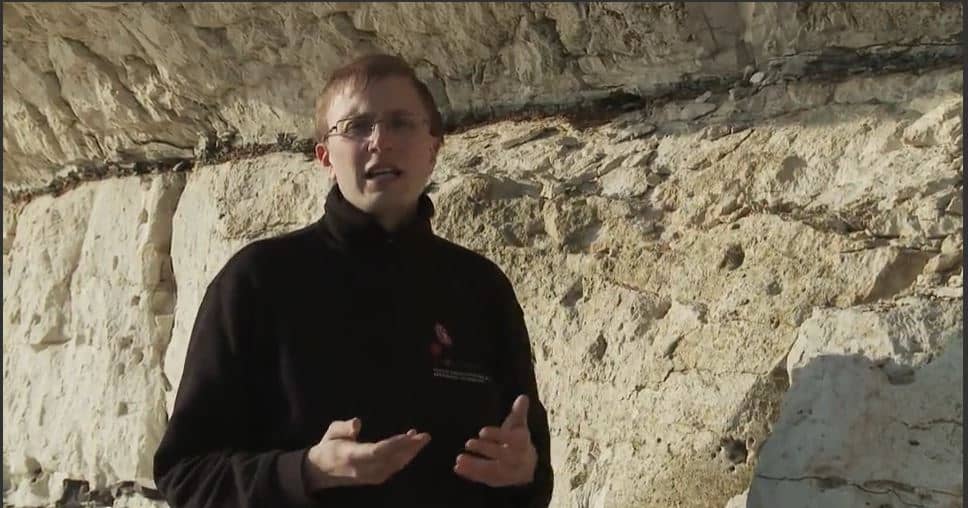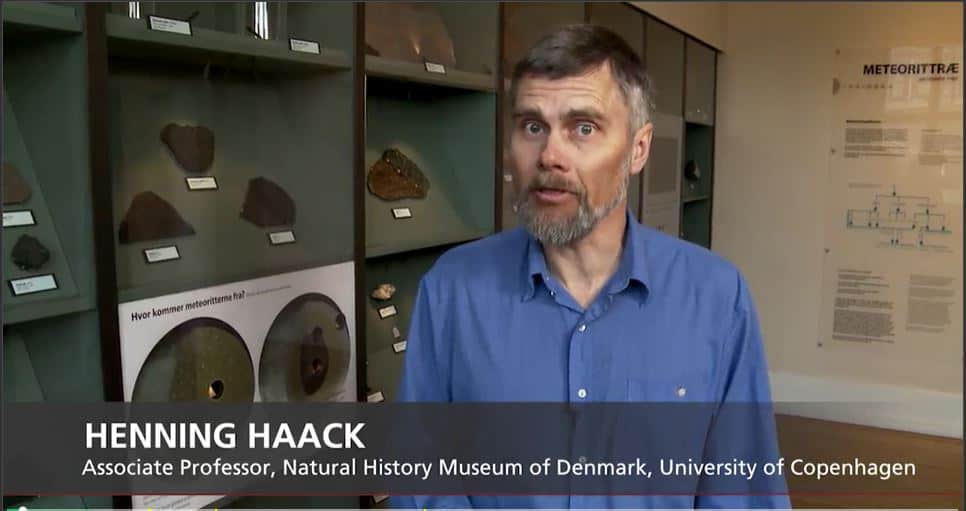In-Depth Review: Origins — Formation of the Universe, Solar System, Earth and Life
Come with me on a twelve week adventure through our universe and planet, in this in depth course review.
Took the course? Write your own review here. Read all reviews.
With a lifelong interest in astronomy and biology, I didn’t think twice before signing up for “Origins — Formation of the Universe, Solar System, Earth and Life” on Coursera.
I even forked out the money for a Verified Certificate, and this became one of only two MOOCs I have paid for. (The other was “Learning How to Learn” — another outstanding experience.)
Instructors
Led by Henning Haack, Associate Professor and the curator of the Meteorite collection at the Natural History Museum of Denmark, this comprehensive twelve week course is a real team effort.
Although the course is branded by the University of Copenhagen, the introductory video tells us that the MOOC has been brought to us by the nation’s Natural History Museum, and many of the seventeen course presenters are from this institution. This is not a criticism; the specialist presenters are very knowledgeable in their respective fields.
The Course
The course also makes the most of Denmark’s research of ancient rocks and fossils in Greenland to delve into prehistory. Many other relevant places on Earth are also visited or discussed during the MOOC.
The course professors recommend a time commitment of 5–7 hours per week. While I did not spend this amount of time (I generally spent about 4–5 hours per week), the lectures were much longer than in some other courses. Also, some weeks held substantially more material than others. Week 1 had eleven videos (three videos on Henning Haack’s passion — meteorites — were labelled as optional) and week 2 only had six (longer) videos.

While some weeks had more than 90 minutes’ worth of videos to watch, others had only about 45 minutes’ worth of material. The length of videos also varied greatly: while many were 15–19 minutes, some were shorter, with a few less than five minutes long. Shorter weeks simply covered a smaller topic. Don’t misunderstand, however; an absolute treasury of information was provided during this course.
A helpful list of optional texts and online resources is provided in Week 1, covering all the course modules.
Students wanting an in-depth look at the formation of the Universe may be disappointed, with the early history of the universe, the solar system and the Earth being covered in 90 minutes’ worth of lectures in Week 1 — although a surprisingly large amount of information is included in the week. There’s no fluff or padding in this course!
The content of the remaining eleven weeks looks at the origins and evolution of life on Earth in its many forms, culminating with the primates and humans in Week 11, and a discussion of biodiversity in the final week of the course. Geology, physics and chemistry are scattered throughout, generally relating to the Earth’s capacity to support life in its many different forms. The lecturers discuss reasons why some types of fossils are more numerous than others, and they explain gaps in the fossil record. They also present changes in climate and theories such as “Snowball Earth” and “The Great Oxygenation Event,” along with supporting evidence.
“What exactly is life?” is defined in Week 2.
Many samples from the collections of the Natural History Museum of Denmark are featured throughout the course.
If you are fascinated by the asteroid theory of the mass extinction event that took place 65 million years ago, take a look at video 9.8, which takes students to Stevns Klint in Denmark. A layer of the correct age, rich in the element iridium, is clearly visible in the cliff face. Iridium is rare on Earth’s surface, but is much more plentiful in asteroids. This layer supports the theory of a devastating extraterrestrial impact at the Cretaceous–Tertiary boundary, causing a worldwide layer of debris to form. Other mass extinctions are also discussed in the relevant videos.
There is an interesting graphic in Week 9, which illustrates the five major mass extinctions (more than 50% of species wiped out worldwide) and sixteen minor ones (when more than 30% of species were lost). It was mind-blowing to learn that 98% of species are only known to us from fossils (see video 9.5 at timestamp 1:45).
The course makes frequent reference to the International Chronostratigraphic Chart (http://www.stratigraphy.org/chart), and I found it useful to commit the various Eons, Eras, and Periods to memory, rather than constantly having to refer to the chart as I progressed through the course. Knowing the order that events happened was extremely useful and worth the time I spent memorizing the chart.
Having paid for a Verified Certificate, Coursera allowed me to take up to 180 days to complete the course. Domestic circumstances forced me to slip behind the weekly deadlines almost immediately and I ended up taking 153 days to drag my way through it. (My fault, I know; not the course’s fault.)
A major part of this problem was that once I was left behind, the student forums were almost deserted and I felt I was working in a vacuum. Coursera’s policy of regularly repeating session-based runs with a simple means of transferring to the next session will hopefully reduce this feeling of isolation. On the other hand, in my opinion, the forums on Coursera’s new platform are generally much less dynamic than the old forums. Why is this so? I don’t know, unless it is because the default forum page goes to forum headings (rather than threads), which list the latest activity in individual forums. Any online salesperson will tell you that having to click just one extra time will decrease sales/engagement dramatically, and having to click into each heading was a nuisance. I have since discovered the threads button on the discussion forums page.
This course ties in with a number of Earth Science, Paleontology, and Biology classes, and it relates to Astronomy but without any heavy calculations. Similar courses I have done include “Paleontology: Theropod Dinosaurs and the Origin of Birds”; “The Science of the Solar System”; “Our Earth, its Climate, History and Processes”; “The Dynamic Earth, A Course for Educators”; and “Planet Earth … and You!” You may also find courses on climate change interesting.
Conclusion
This is a comprehensive twelve week course tracing the history of the universe. It starts right from the Big Bang and goes through the beginnings of life on Earth, evolution, and changes in geology and biology; it culminates in the emergence of primates and humans, and in a discussion of biodiversity. It’s a fascinating course!
[review_widget]
Class Central is looking for reviewers and regular contributors. If you’ve ever finished a MOOC and want to write a critique to help future students considering taking that course, we want to hear from you. Drop us a mail.






